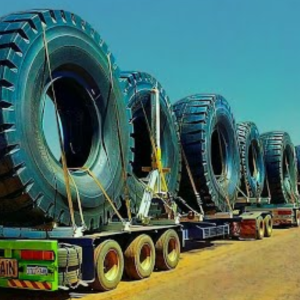
With its smooth styling and hidden headlamps, the 1942 DeSoto looked more daring and futuristic than most everything on the road.

The 1942 DeSoto wasn’t the first American production car with hidden headlamps, of course. Credit for that innovation generally goes to the 1936 Cord 810, styled by Gordon Buehrig. (The company took out a patent on the headlamp design.) But we can credit Chrysler’s DeSoto division for being the first to offer the feature to the U.S. mass market. DeSoto called its version Airfoil Lights, and it was one of a number of distinctive features the brand offered that year. We intend to explore a few them here.
 But first, the headlamps: The mechanism (above) is surprisingly simple and robust, especially when compared to the individual hand cranks used by Cord. A handle-operated push/pull rod extends through the firewall (yellow arrow) and engine compartment, where it connects to a bell crank and a cross shaft that operates a pair of sheet metal eyelids—the sealed-beam headlamps themselves remain stationary. The headlamp switch is built into the handle, above left. (Thanks to Dan and Lois Dolan, owners of the black DeSoto Club Coupe pictured here).
But first, the headlamps: The mechanism (above) is surprisingly simple and robust, especially when compared to the individual hand cranks used by Cord. A handle-operated push/pull rod extends through the firewall (yellow arrow) and engine compartment, where it connects to a bell crank and a cross shaft that operates a pair of sheet metal eyelids—the sealed-beam headlamps themselves remain stationary. The headlamp switch is built into the handle, above left. (Thanks to Dan and Lois Dolan, owners of the black DeSoto Club Coupe pictured here).
While the ’42 DeSoto was the first production vehicle from Chrysler Corporation with hidden headlamps, the feature was included the year before on two well-known Chrysler idea cars, the 1941 Newport and Thunderbolt (Five examples of each were built). DeSoto enthusiasts will note that for 1942, the running boards were also concealed for the first time. We might also mention that Pinin Farina in Italy also employed hidden lamps on several cars around the same general time as Cord.

While the Airfoil headlamps were the most visible innovation at DeSoto for 1942, the division was also an early adopter of air conditioning, along with Packard (1940) and Cadillac (1941). Like all the early automotive A/C units, the Chrysler Airtemp package, first used on the Imperial in 1941, was large and bulky, with the evaporator and distributor mounted behind the rear seat. Barely a handful of these expensive setups were sold in ’42. Integrated, in-dash A/C would be introduced by Nash and Pontiac in 1954.

Another advanced feature offered by DeSoto at the time was Simplimatic, a four-speed semi-automatic transmission based on Chrysler’s Fluid Drive system. DeSoto pioneered in marketing as well, offering options not often available to mid-priced car buyers in those days. The Personalized Interiors program offered as many as 10 available upholstery and trim combinations, while an option package called the Fifth Avenue Ensemble included unique chrome rear fender trim, a premium seven-tube radio, and a cigarette case built into the steering wheel.
All this was rather advanced for 1942, and it’s fun to see how commercial artists interpreted the DeSoto—for example, in the lead illustration at the top of the page and in the image below. In their poetic imaginations, the DeSoto was as sleek and daring as anything on the road. However, the dramatic styling didn’t necessarily translate into showroom sales. Barely 24,000 vehicles were produced before the lines were shut down in early 1942 as the war effort shifted into high gear. When production resumed after World War II, the 1946 DeSoto was essentially the 1942 model but with conventional, exposed headlamps. In the postwar seller’s market, the feature was unnecessary.






